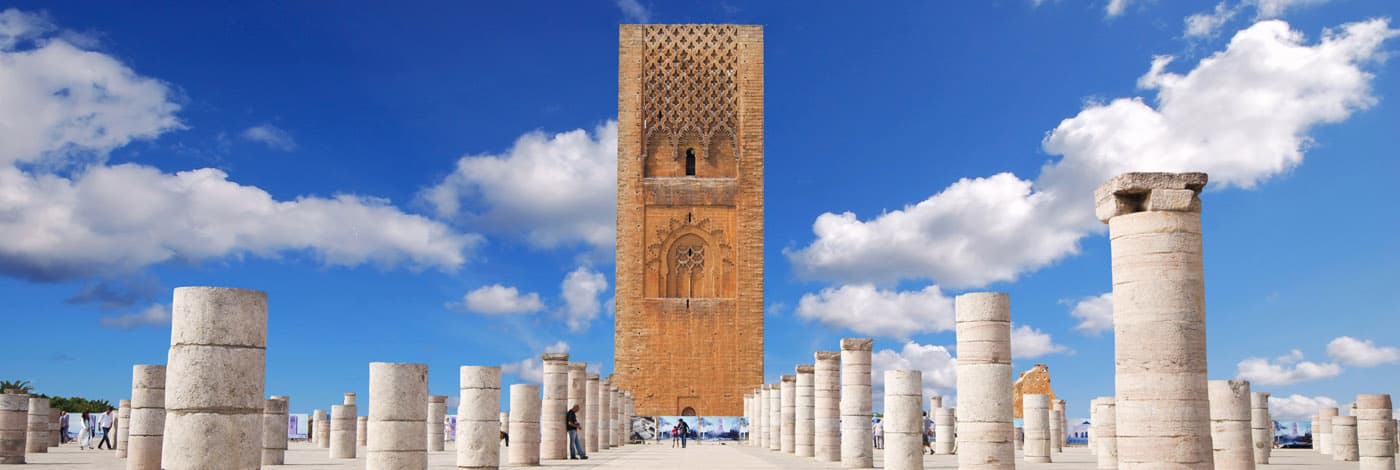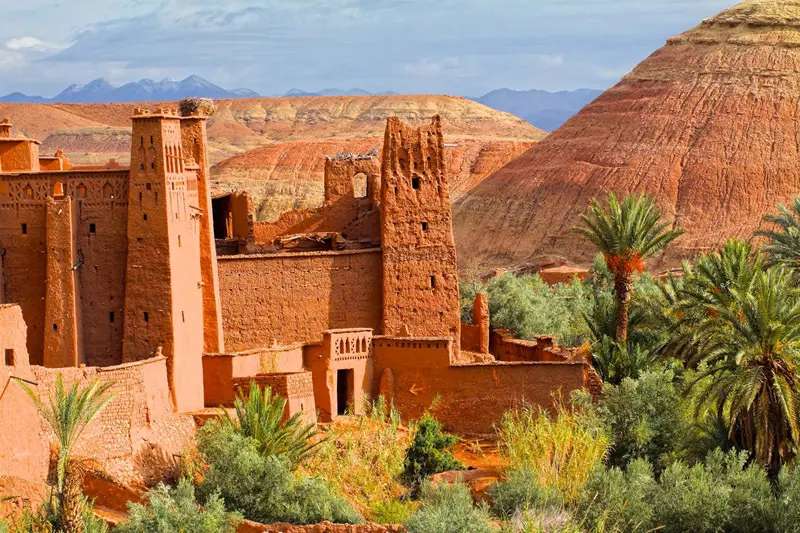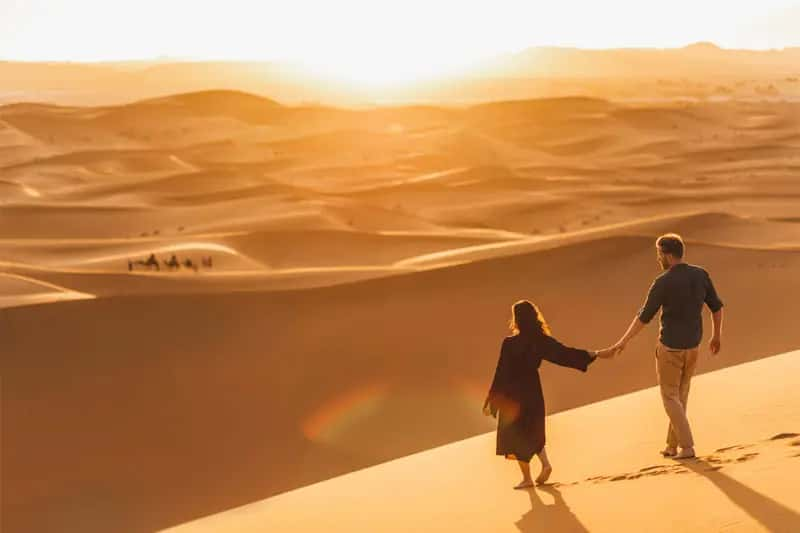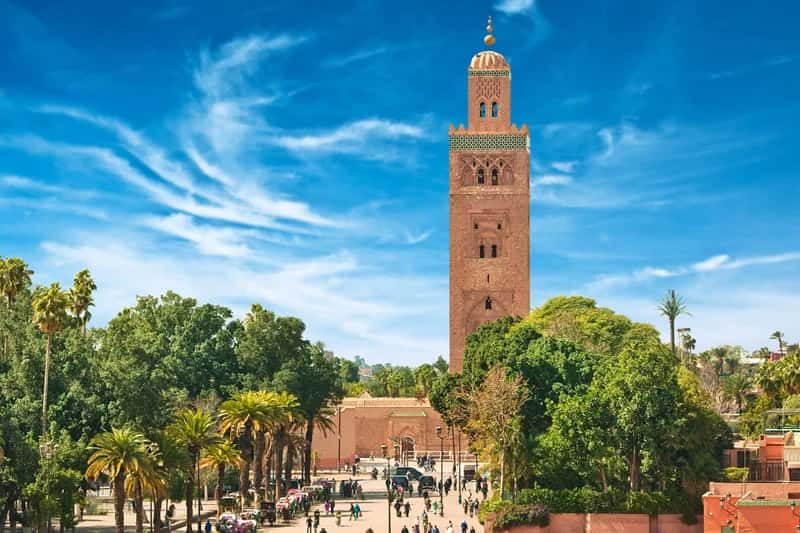
Hassan Tower
The tour of Hassan Tower is in Rabat. It's remains clearly depicts it as part of an incomplete mosque. The tower, which was started in 1195, was designed to be the biggest minaret in the world. When Sultan Yacoub al-Mansour passed away in 1199, work on the mosque came to an end. The tower didn't quite achieve its projected 86 m height; it barely rose to 44 m. With just the beginnings of 200 columns and numerous walls, the remainder of the mosque was likewise left unfinished. The red sandstone tower, combined with the mosque's ruins and Rabat's contemporary Mausoleum of Mohammed V, make up a significant historical and touristic complex. Ramps are used to climb the tower rather than steps. The muezzin would have been able to call people to prayer by riding a horse up the ramps of the minaret. Yaqub al-Mansur, the creator of the Hassan Tower, was a Berber Muslim emperor of West Africa and Iberia under the Almohad Dynasty. Tradition holds that the tower was created by Jabir, an architect who also created the Giralda, Hassan's sister
tower in Seville, modern-day Spain. The minaret of the Koutoubia Mosque in Marrakech, another of Jabir's designs, served as the inspiration for both towers. Later, once the Giralda had been transformed from a bell to a minaret during the Renaissance, Spaniards attached a western-style top to it.
History:
History
The Hassan Tower is a 140-foot red stone minaret erected during the time of Yacoub El Mansour, a sultan of the Almohad Dynasty who ruled from 1184 AD.
Around 1195 AD, work on the Hassan Tower started with the goal of creating the biggest mosque on earth. Al-Andalus in Spain, Marrakech, and Alexandria are just a few places where Moorish and Muslim architectural influences may be seen on the structures. But rather than relocating to Rabat, the Almohad Caliphate kept Marrakech as its capital. However, just four years had passed since the project's start when the sultan passed away. The mosque's foundation, consisting of 348 columns and the first sections of its walls, was demolished by an earthquake. French and Moroccan archaeologists thoroughly investigated the site in the 20th century, reconstructing what they could. The mosque's remains were relocated later to make room for the nearby construction.
Yaqub al-Mansur, the leader of the Almohad Caliphate, a Berber Muslim power in the Maghreb and Iberia, served as the patron who oversaw the construction of the Hassan Tower. On the location of what is now Rabat's medina (old city), Al-Mansur decided to build a new fortified imperial capital named al- Mahdiyya or Ribat al-Fath, with additional walls enclosing a huge area beyond the previous Kasbah. The Hassan Tower was intended to be the minaret of the vast mosque that was to be built for this city as part of this project. The mosque's construction began in 1191, while Mármol's historical accounts, which assert that Ribat al-Fath was built to honor al-victory Mansur's at the Battle of Badr, sometimes occasionally mention 1195 as the construction year.
Along with the nearby tomb, the complex is still a must-see attraction in Rabat and is included on the UNESCO World Heritage List. Be sure to see the incredibly beautiful pillar stumps and keep an eye out for the stunning ornate sekba panels that are located outdoors. The complex has a particularly gorgeous tint at dawn and dusk, making those hours ideal for visiting.
Architecture
Facts About Hassan Tower
The tower is composed of sandstone, which over the years has gradually taken on the color of red ochre. Like other minarets in the area, it features a square floor design that is 16 meters on each side. Based on knowledge of the regular proportions of other Almohad minarets, the existing structure's intended height was at least 64 m and probably 80 m to the top of its second tier (the smaller lantern tower that often tops minarets) and finial. It is currently 44 m tall. The tower is climbed by ramps rather than steps, which would have let the muezzin ride a horse to the top to sound the call to prayer.
A vaulted room would have been located in the middle of each of the six stories, encircled by ramps and illuminated by horseshoe-shaped windows carved into the tower's sides. Although it still has one marble capital with Andalusi spolia decoration, its façade is ornamented with panels with sebka patterning, engaged columns, and capitals carved from the same sandstone as the tower itself.
related tours

Morocco Imperial Cities Tour
8 Days / 7 Nights
From
$ 729

Morocco Imperial Cities With Sahara Adventure
10 Days / 9 Nights
From
$ 1010

Morocco Grand Tour
13 Days / 12 Nights
From
$ 1950
